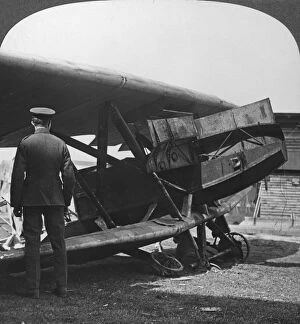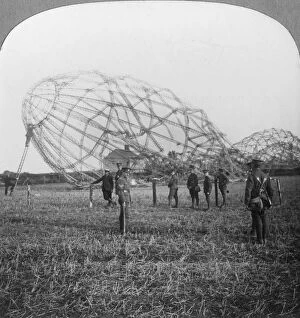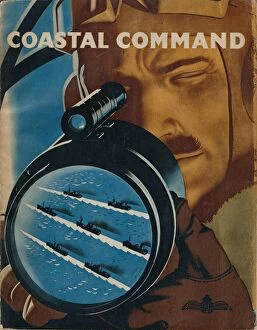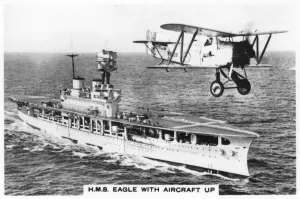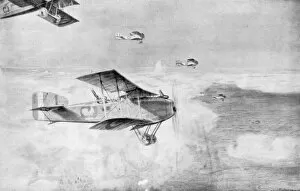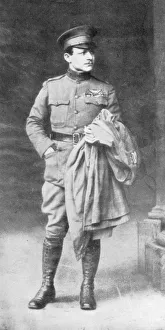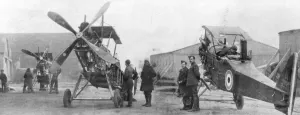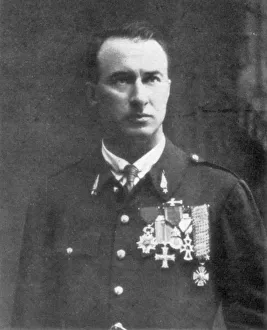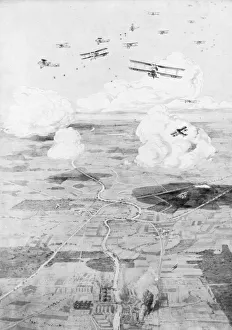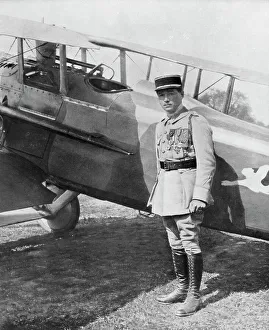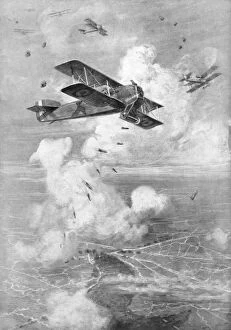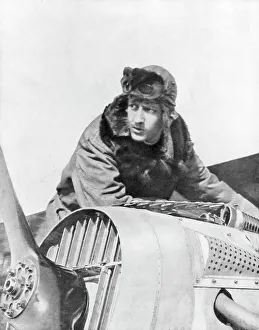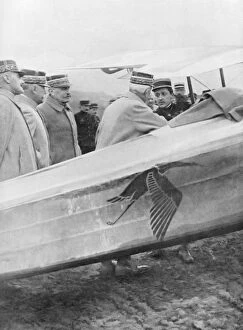Aerial Warfare Collection (page 5)
"Aerial Warfare: The Skies Become a Battlefield" In the midst of the chaos and uncertainty of war, brave men took to the skies, becoming legends in their own right
All Professionally Made to Order for Quick Shipping
"Aerial Warfare: The Skies Become a Battlefield" In the midst of the chaos and uncertainty of war, brave men took to the skies, becoming legends in their own right. Meet an RAF bomber pilot and his second pilot, soaring through the clouds in 1941, determined to defend their homeland. As tensions rose across Europe, Air Raid Precautions became a vital part of daily life. A cigarette card from 1938 serves as a reminder of those anxious times when civilians sought refuge from enemy attacks. The iconic image of an RAF Spitfire resting on the deck of an aircraft carrier en route to Malta in 1942 showcases the crucial role these agile fighters played during World War II. Refuelling and re-arming Spitfires on Maltese soil further exemplify their unwavering commitment to victory. However, aerial warfare was not without its perils. The haunting sight of air raid damage inflicted upon Clacton-on-Sea in April 1940 stands as a stark reminder that no place was truly safe from destruction. Looking back even further into history, we find ourselves amidst World War I's early days. Witness Crown Prince Wilhelm seeking shelter beneath his car as French aeroplanes dropped darts from above in 1915. In another instance captured by lithography, a German Zeppelin crashes into the North Sea after conducting a raid on England in 1916. Yet it wasn't just combatants who suffered; innocent lives were lost too. Two peasant women tragically fell victim to German aeroplanes' relentless onslaught during World War I - another painful testament to the horrors endured by civilians caught up in this new form of warfare. Amidst all this turmoil lies moments of respite for those involved behind-the-scenes. Lunchtime at Douglas Aircraft Company's plant brings temporary relief for workers laboring tirelessly towards victory - captured beautifully by Alfred T Palmer's lens in Long Beach, California, 1942.












